Understanding the 1N5408 Diode: Specifications, Applications, and Alternatives
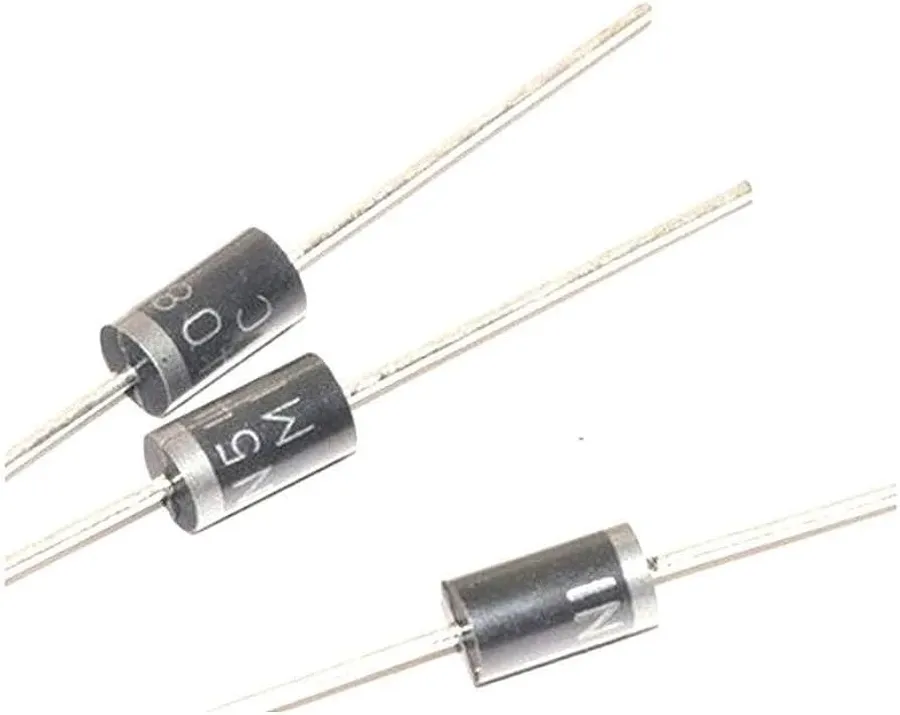
The humble diode, a cornerstone of modern electronics, plays a crucial role in directing the flow of electrical current. Among these vital components, the 1N5408 diode stands out as a workhorse, widely used in power supplies and various rectification circuits. Understanding its characteristics and capabilities is paramount for any electronics enthusiast or engineer. Just as a traffic controller ensures smooth flow of vehicles, the 1N5408 diode ensures electrical current flows in one direction, which is critical for electronic circuits. In this article, we will delve into the specifications, applications, and alternatives of this important component, providing you with a comprehensive guide to the 1N5408 diode.
1N5408 Diode: Core Specifications

The 1N5408 diode is a silicon rectifier diode characterized by its robust electrical specifications, making it suitable for various power rectification and general-purpose applications. Key parameters include its peak inverse voltage (PIV), maximum forward current, and operating temperature range, which dictate its performance and suitability for specific circuit designs.
| Parameter | Value | Unit |
|---|---|---|
| Peak Inverse Voltage (PIV) | 1000 | V |
| Maximum Average Forward Rectified Current | 3 | A |
| Maximum Peak Forward Surge Current | 200 | A |
| Forward Voltage Drop (Typical) | 1.0 | V |
| Operating Temperature Range | -65 to +150 | °C |
| Storage Temperature Range | -65 to +175 | °C |
Key Differences Between 1N5408 and 1N5400 Series
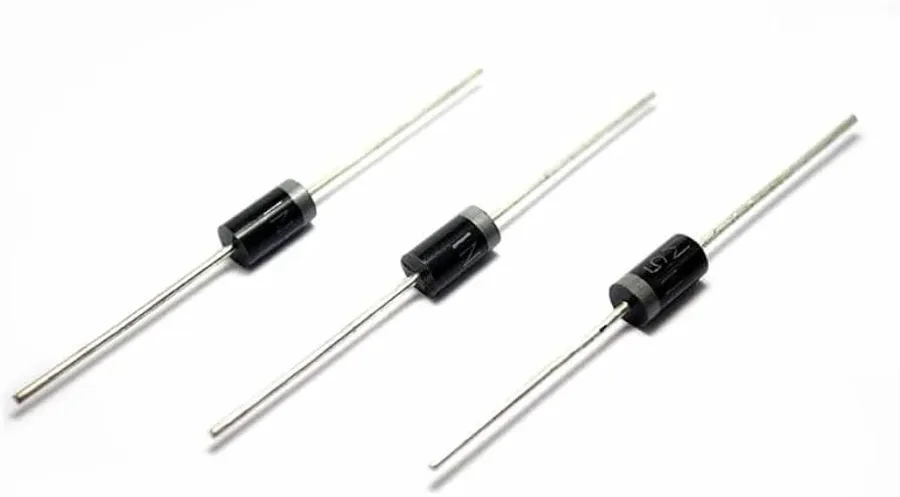
The 1N5400 series of diodes, including the 1N5408, are popular for power rectification due to their robust current and voltage handling capabilities. This section details the subtle yet critical distinctions within the series, specifically focusing on voltage and current ratings that differentiate each diode, allowing for precise component selection for various electronic applications.
| Diode Model | Peak Inverse Voltage (PIV) | Average Forward Current | Typical Application |
|---|---|---|---|
| 1N5400 | 50V | 3A | General purpose rectification in low voltage circuits |
| 1N5401 | 100V | 3A | Rectification in slightly higher voltage circuits |
| 1N5402 | 200V | 3A | Power supplies and inverters with moderate voltage |
| 1N5404 | 400V | 3A | Higher voltage rectification, medium power |
| 1N5406 | 600V | 3A | High voltage applications, more robust circuits |
| 1N5408 | 1000V | 3A | High voltage rectification, power supply with high input voltage, surge protection |
As evidenced in the table, while all diodes in the 1N5400 series share a 3A average forward current, the key differentiator lies in their Peak Inverse Voltage (PIV). The 1N5408 has the highest PIV at 1000V, which determines its capacity to withstand reverse voltage without breaking down and the 1N5400 has the lowest PIV at 50V. This variation in PIV means the choice of a particular diode is dictated primarily by the circuit's voltage requirements.
1N5408 Diode's Role in Power Rectification
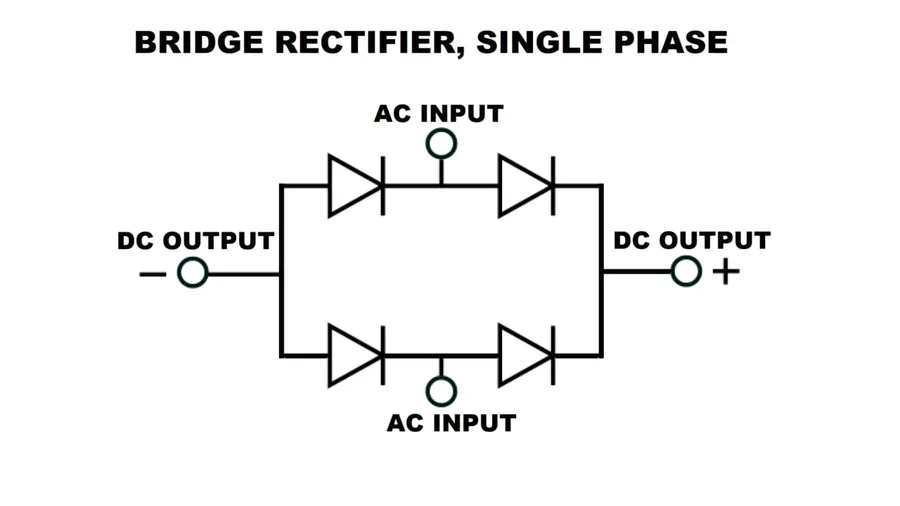
The 1N5408 diode is fundamental in power rectification, a critical process in converting alternating current (AC) to direct current (DC). This conversion is essential for powering a vast array of electronic devices, from simple household appliances to sophisticated industrial equipment. The diode's unidirectional current flow characteristic is what makes this transformation possible.
In AC circuits, current periodically changes direction. The 1N5408, acting as a rectifier, allows current to flow in only one direction. This is achieved by the diode having a low resistance in the forward-biased direction and high resistance in the reverse-biased direction. This behavior effectively 'clips' the negative portion of the AC waveform, converting it to a pulsating DC.
The process of rectification using 1N5408 diodes is a cornerstone in power supply design. Configurations such as half-wave and full-wave rectifiers use one or more diodes respectively, to convert AC voltages to DC voltages that are suitable for powering various electronic loads. In a half-wave rectifier, a single diode blocks one half of the AC cycle, resulting in a pulsating DC output. Full-wave rectifiers utilize multiple diodes, often in a bridge configuration, to use both halves of the AC cycle to produce a more consistent DC output with higher efficiency.
Practical applications of the 1N5408 in power rectification include the conversion of mains AC power to the DC voltages required by many electronic devices, notably in power adapters and chargers, where the diode rectifies the AC signal coming from the mains supply. Furthermore, the 1N5408 is found in power inverters, which convert DC power into AC power by switching the DC power source through a series of stages. During the DC to DC voltage conversions within the power supplies, the 1N5408 may serve as a protection component, preventing reverse current flow and damage to sensitive circuits. The robustness and affordability of this diode have made it a popular choice for power rectification across various applications, despite the existence of more efficient alternatives, where simplicity and cost-effectiveness are the driving factors.
Practical Applications of the 1N5408 Diode
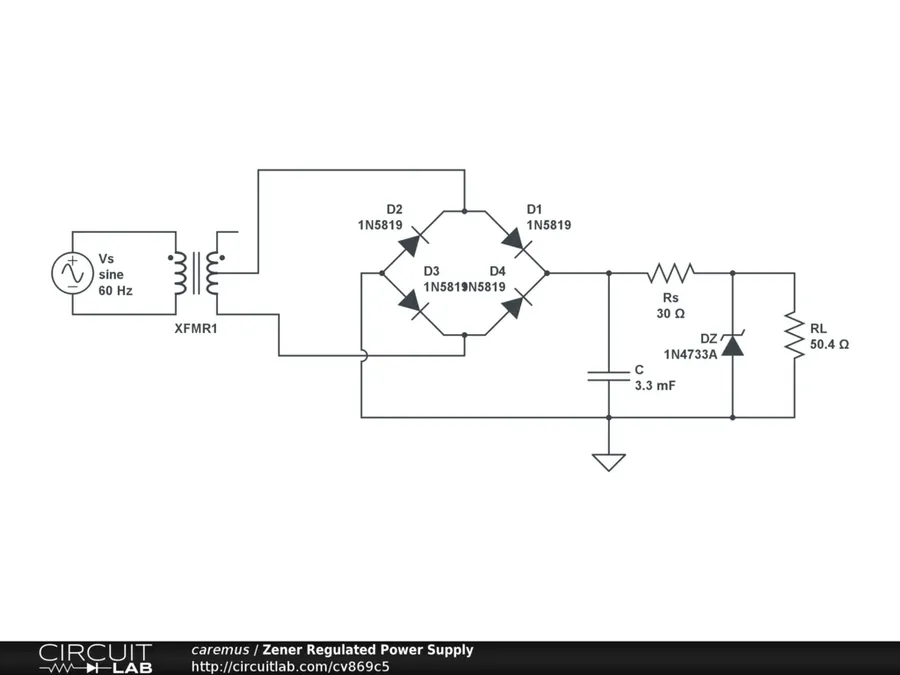
The 1N5408 diode, with its robust specifications, finds widespread use in various electronic applications, primarily in power rectification, protection, and general-purpose switching. Its capacity to handle significant current and voltage levels makes it a versatile component in numerous circuits.
- Power Supplies and Adapters
The 1N5408 is commonly used in the rectifier stage of AC-to-DC power supplies and adapters, converting the incoming AC signal to a pulsating DC which is then smoothed by capacitors and regulators. It is a foundational component in providing stable DC power for electronic devices. - Battery Chargers
In battery charging circuits, the 1N5408 acts as a crucial rectifier, ensuring that current flows in the correct direction to charge the battery, preventing reverse current flow that could damage the battery or charging circuit. It is found in various chargers from small portable device chargers to larger vehicle battery chargers. - Power Inverters
The 1N5408 is employed in power inverters to help in the switching and rectification stages. These devices convert DC power back into AC power and the diode helps to control and direct current flow in these applications. These applications range from small inverters for powering a device on the go to larger inverters for use in renewable energy systems. - General Circuit Protection
As a general-purpose diode, the 1N5408 provides essential reverse polarity protection in many circuits. It prevents damage to sensitive components by blocking reverse currents that can occur due to incorrect polarity connection of a power supply or when there are transient power events. - Freewheeling Diode Applications
In inductive circuits, the 1N5408 serves as a freewheeling or flyback diode. When an inductive load, such as a relay or motor, is switched off, the stored energy in the inductor can generate a high voltage spike which can damage other components of the circuits. The 1N5408 provides an alternative path for the current to dissipate, protecting the circuit from overvoltage.
1N5408 vs. Schottky Diode: A Detailed Comparison
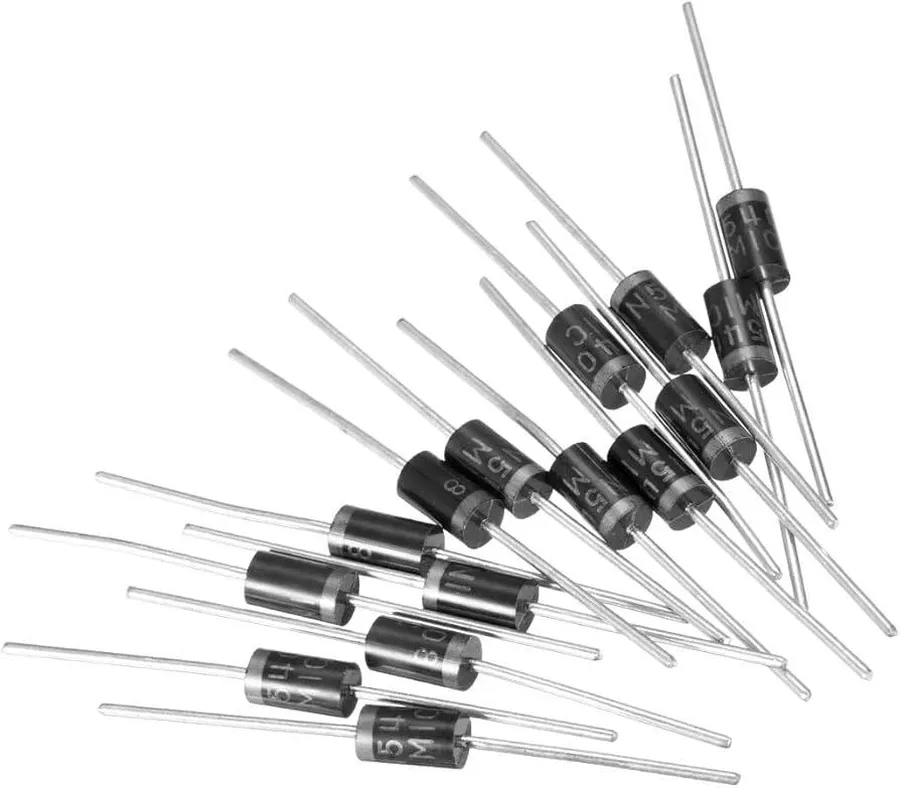
While the 1N5408 serves as a robust general-purpose rectifier diode, Schottky diodes offer distinct advantages in certain applications. This section provides a detailed comparison of their characteristics, focusing on voltage drop, switching speed, and typical uses, to help in selecting the optimal diode for specific circuit requirements.
| Characteristic | 1N5408 Diode | Schottky Diode |
|---|---|---|
| Forward Voltage Drop | Relatively High (0.7 - 1.0V) | Low (0.2 - 0.4V) |
| Switching Speed | Slow | Fast |
| Reverse Recovery Time | High | Very Low |
| Maximum Reverse Voltage | High | Lower compared to similar rated PN Junction Diode |
| Typical Application | General-purpose rectification, power supplies | High-frequency switching, voltage clamping, power rectification in high-frequency circuits |
| Cost | Low | Higher |
The primary difference between the 1N5408 and a Schottky diode lies in their construction. The 1N5408 is a PN junction diode, while a Schottky diode uses a metal-semiconductor junction. This difference leads to several key performance variations.
Due to the difference in construction, Schottky diodes have a significantly lower forward voltage drop, which reduces power loss and heat generation, particularly in high-current circuits. In contrast, 1N5408 diodes exhibit a higher voltage drop and slower switching speeds, making them less suitable for high-frequency applications but excellent for general power rectification.
1N5408 Diode Pinout and Packaging
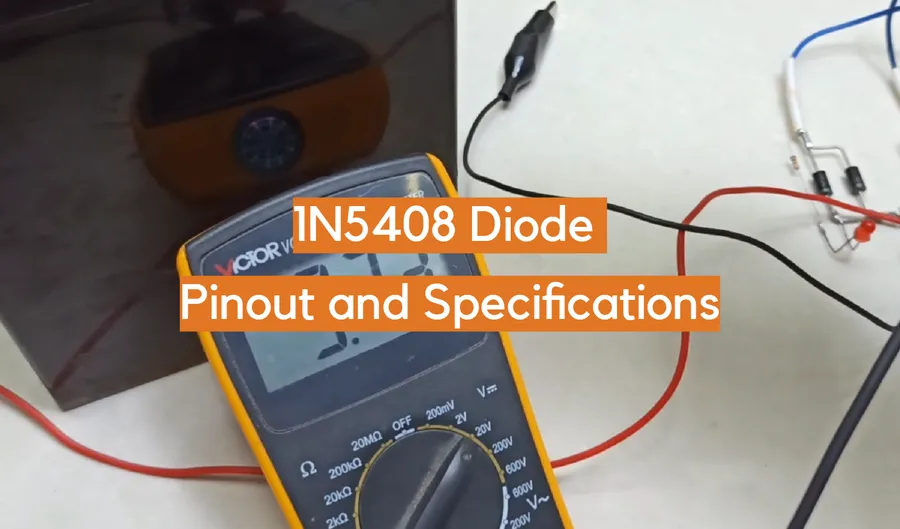
The 1N5408 diode, like most axial-lead diodes, features a simple and robust physical design. Understanding its pinout and packaging is crucial for correct integration into circuits, ensuring proper functionality and preventing damage. This section details the physical aspects of the 1N5408, highlighting how to identify its polarity and handle it safely.
The 1N5408 is typically housed in a DO-201AD package, characterized by its cylindrical body and two axial leads extending from either end. These leads are designed for through-hole mounting on circuit boards. The body of the diode is commonly made of epoxy, providing insulation and protection for the internal semiconductor junction. The dimensions of the package adhere to industry standards, facilitating ease of handling and mounting. This standardisation is critical for manufacturing processes.
| Feature | Description |
|---|---|
| Package Type | DO-201AD |
| Body Material | Epoxy |
| Lead Type | Axial |
| Mounting Style | Through-hole |
A key consideration when working with diodes is identifying the anode and cathode. The 1N5408 has a polarity marking – typically a band, usually silver or white, printed on the body of the diode. This band is located closer to the cathode terminal, which is the negative lead. The lead on the opposite side of the band is the anode (positive lead). Correctly identifying the polarity of the diode is crucial for it to function as designed in the circuit, as diodes only allow current to flow primarily in one direction, from anode to cathode.
When handling the 1N5408, or any electronic component, it’s important to adhere to certain guidelines. Avoid excessive bending of the leads, as this could damage the internal connections of the diode. Using proper soldering techniques is also crucial. Avoid excessive heat during soldering as this may damage the semi-conductor material, it's advisable to use a heatsink or perform the soldering quickly to prevent damage. Store in a dry environment to prevent oxidation.
Frequently Asked Questions About the 1N5408 Diode
This section addresses common queries regarding the 1N5408 diode, providing clear and concise answers based on fundamental electronic principles and datasheet specifications.
- What is the primary function of an 1N5408 diode?
The 1N5408 diode is primarily used for rectification, converting alternating current (AC) to direct current (DC). It allows current to flow in one direction while blocking it in the opposite direction. This behavior is crucial in power supplies and various electronic circuits for stable DC power conversion. - What is the maximum forward current rating of the 1N5408 diode?
The 1N5408 diode has a maximum average forward current rating of 3 Amperes. It's imperative not to exceed this limit to prevent damage to the diode and the associated circuitry. - What is the peak inverse voltage (PIV) of the 1N5408 diode?
The Peak Inverse Voltage (PIV) for the 1N5408 diode is 1000 volts. This parameter is crucial because it defines the maximum reverse voltage that the diode can withstand without experiencing breakdown or damage. Applying a voltage greater than the PIV can lead to diode failure. - What are some suitable replacements for the 1N5408 diode?
The 1N4007 diode is a common alternative, offering a similar function with a slightly lower current capacity and peak inverse voltage. Additionally, diodes with similar or higher PIV and current ratings can be used as replacements based on the application’s demands, but always ensure the replacement meets or exceeds the electrical requirements. - Can the 1N5408 diode be used in high-frequency switching applications?
The 1N5408 is not optimized for high-frequency switching applications. Its relatively slow reverse recovery time limits its efficiency at higher frequencies. For high-frequency applications, consider using fast recovery or Schottky diodes, which have much shorter recovery times. - What is the typical forward voltage drop of a 1N5408 diode?
The 1N5408 typically exhibits a forward voltage drop between 0.7 to 1.0 volts when conducting current. This voltage drop is important for power dissipation calculations and efficiency analysis in a circuit, understanding that it represents the loss of voltage across the diode while it is conducting forward current. - What is the difference between the 1N5408 and the 1N5400 series diodes?
The 1N5400 series includes diodes with the same basic structure, but with varying peak reverse voltage ratings. The 1N5400 is rated for 50V, the 1N5402 at 100V, the 1N5404 at 200V, the 1N5406 at 600V, and the 1N5408 at 1000V. Thus, the 1N5408 is designed for higher reverse voltage applications than other members of the 1N5400 series.
Troubleshooting Common Issues with the 1N5408 Diode
The 1N5408 diode, while robust for many applications, can experience failures if operated outside its specified parameters or under adverse conditions. Identifying and addressing common issues promptly can prevent further damage and ensure the longevity of the circuit.
- Overcurrent Damage
Exceeding the 1N5408's maximum forward current rating can lead to overheating and permanent damage. This often manifests as a short circuit or an open circuit within the diode. Verify circuit current and ensure that the diode is operating within its specifications. - Excessive Heat
Sustained operation at high temperatures, even within rated current limits, can degrade the diode's performance and lifespan. Inadequate heatsinking or proximity to other heat-generating components can exacerbate this. Monitor diode temperature, and ensure proper heat dissipation. - Reverse Voltage Breakdown
Applying a reverse voltage exceeding the Peak Inverse Voltage (PIV) will cause the diode to break down and potentially fail catastrophically. Always confirm the circuit's reverse voltage does not exceed the 1N5408's specification. Using diodes in series to increase the PIV is also a consideration. - Improper Connection
Incorrect polarity connection of the 1N5408 diode can cause reverse conduction, which can damage the diode if the reverse current is high enough or if the reverse voltage is exceeded. Verify the anode and cathode connections to the diode as well as to the rest of the circuit. - Physical Damage
Physical stress such as excessive bending of the leads or impact can cause internal fractures and failures. Carefully handle diodes during assembly and ensure that there are no undue stresses after installation. - Degradation Due to Age
Over extended periods of operation, diode materials can degrade which can affect the diode's performance. Monitoring forward voltage drop and reverse leakage current could indicate degradation of the diode. Replacing components after extended use, is sometimes a preventative measure.
Choosing the Right Diode: Factors to Consider
Selecting the appropriate diode for a specific application requires careful consideration of several key parameters beyond just the 1N5408. These factors include voltage requirements, current handling capabilities, operating temperature, switching speed, and the specific demands of the circuit design. A thorough understanding of these aspects ensures optimal performance and reliability.
| Factor | Description | Relevance to Diode Selection |
|---|---|---|
| Peak Inverse Voltage (PIV) | The maximum reverse voltage the diode can withstand without breaking down. | Crucial for preventing diode failure under reverse bias conditions; the PIV rating must exceed the maximum reverse voltage expected in the circuit. |
| Forward Current (I_F) | The maximum current the diode can safely conduct in the forward direction. | Determines the diode's capacity to handle the intended current load; selecting a diode with an inadequate forward current rating can lead to overheating and damage. |
| Forward Voltage Drop (V_F) | The voltage drop across the diode when it is conducting current in the forward direction. | Affects power efficiency; diodes with lower forward voltage drops minimize power loss. Consider this for low voltage circuits. |
| Operating Temperature Range | The range of temperatures within which the diode will function correctly. | Crucial for applications where temperature fluctuations can be significant; ensure diode can operate within the temperature range specified. |
| Reverse Leakage Current (I_R) | Small current that flows through the diode when it is reverse-biased. | It should be minimal; can impact circuit efficiency and power consumption. Important for precision electronics. |
| Switching Speed | How fast the diode can switch from a conducting to a non-conducting state (and vice-versa). | Essential for high frequency applications; Schottky diodes are known for their fast switching speeds, while standard rectifier diodes like 1N5408 are typically slower. |
| Diode Type (e.g., rectifier, Schottky, Zener) | Different types of diodes are designed for specific applications and performance characteristics. | Choose the diode type based on the circuit needs (e.g., rectifiers for power conversion, Zener diodes for voltage regulation, and Schottky diodes for high-speed switching). |
When selecting a diode, it's essential to consult datasheets to confirm the diode's specifications match your intended application. Consider safety factors. For example, if the maximum reverse voltage in a circuit is 300V, you might consider selecting a diode with a PIV rating of 600V, adding a significant margin of safety. Similarly, choose diodes with a forward current rating that considerably exceeds the maximum current anticipated to reduce operating temperatures and improve the lifespan of the components.
The 1N5408 diode is more than just a component; it's a crucial building block for many electronic devices. Its robustness and versatility make it an essential component for anyone working with electronics. By understanding its characteristics and limitations, you can leverage the 1N5408 diode effectively in your projects. Whether you are designing a basic power supply or troubleshooting a complex circuit, the 1N5408 offers a reliable and accessible solution for various rectification needs. Furthermore, ongoing advancements in materials science suggest we will see more efficient and compact alternatives in the future, continuing to enhance the capabilities of electronic devices.
 AnyPCBA
AnyPCBA